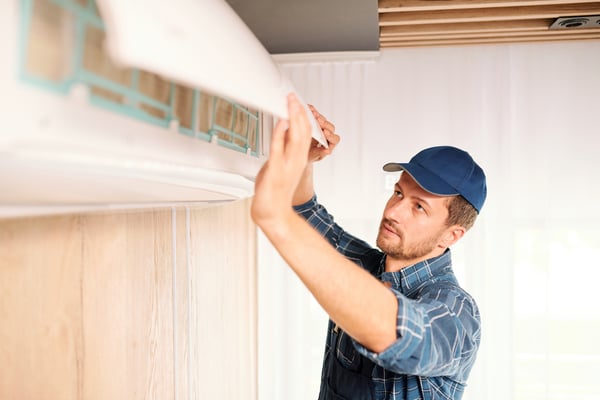
It is an understatement to say property maintenance teams are feeling stretched thin. But while staying on top of day-to-day resident needs is a must, it's important to ensure your preventative maintenance schedules don’t slip.
There are many reasons why preventative maintenance may take a back seat. In the time of COVID-19, there are always fires to fight, issues to address, and immediate resident requests that leave little time for anything else. Combined with limited access to residents' homes and physical distancing guidelines, it can be tough to juggle responsibilities, especially those that seem less pressing. After all, with more people home, more assets break and you have more emergencies.
It’s easy to understand why it’s tempting to let preventative maintenance slide. However, doing so risks creating extra costs and hassles down the road when equipment or assets fail unnecessarily due to lack of attention. Replacing HVAC filters or cleaning condenser coils may seem like something that can be put off until there is more time, but skimping on preventative maintenance measures almost always leads to greater headaches later on.
The upside is there are ways to keep up with preventative maintenance and in a way that doesn't add stress. The key is considering how various technologies and strategies can be incorporated into everyday tasks to make things easier, more efficient, and more productive.
Paperless scheduling: Paper-based schedules may have done the trick in the past, but complex times call for more sophisticated, real-time solutions. There’s definite value in using property management platforms and mobile technologies that equip maintenance professionals with digital schedules that can be generated, shared, and updated in real-time. Being able to define your preventative maintenance schedules at the company, region, or property level will ensure relevant tasks are sent to techs based on their maintenance schedules. Also, having the ability to see what other tasks are pending while performing a task in the same area cuts down on site visits and allows for more effective planning of maintenance resources..
Centrally manage requests: The post-pandemic backlog is real. Managing it means adopting a centralized system in which requests are submitted, managed, and assigned in real-time and, ideally, instantly appear on technicians’ mobile devices.
“With a paper-based system, there's just too much bureaucracy – too many people doing too much paperwork in multiple locations,” says one VP and national portfolio manager of an international institutional fund in our SuiteSpot whitepaper, 7 Maintenance Mistakes that Even Seasoned Operators Make. "What happens is one maintenance worker may walk across the street to pick up their maintenance request and head back to where they came from only to find out later in the day that another request came in minutes after they left and has been sitting there since."
Alternatively, he continues, "if they received that request on their smartphone, to begin with, they could have easily knocked it out in seconds. Instead, that request sits there for longer than it needs to and we start seeing a backlog."
This anecdote demonstrates why centrally managing requests is so important. Your management system should ensure that a tech going to one apartment for a leaky drain is also assigned any preventative maintenance tasks next door. Efficiency is key!
Boost accuracy: Nobody is perfect. But using reliable technologies helps eliminate human errors, miscommunications, and mistakes during preventative maintenance. This also reduces delays and added costs. Using mobile inspection apps can add accuracy to critical processes, while cloud-based platforms ensure tasks are performed as expected.
“A picture is always worth a thousand words,” adds Brian Turpin, Chief Information Officer with Greenwin Inc. "When you have a system where a resident sends in a maintenance request with a picture of what the issue is, you're eliminating a lot of potential confusion, streamlining the maintenance request process, and achieving better results."
Benchmarking progress: Preventative maintenance is a function with many moving parts. As such, it pays to have a "big picture" view of which preventative maintenance activities are being prioritized, how well they're being tackled, and how long each typically takes to complete. This helps teams identify areas for improvement, enhance accountability, and build greater consistency into the process.
There are many reasons to keep preventative maintenance a priority. Consider how mobile tools and back-office systems can keep these critical tasks on teams' radars and prepare them for the post-pandemic backlog to come.





.png)
